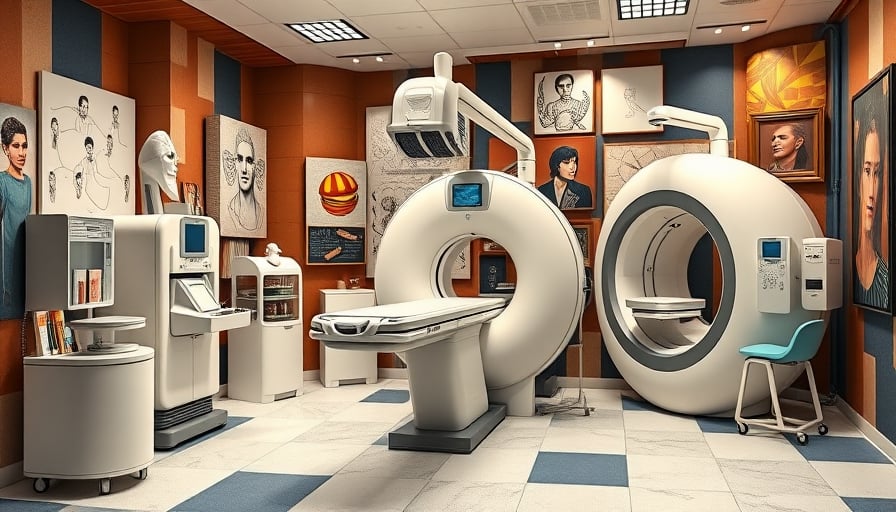Siemens AG’s Partial Divestiture of Siemens Healthineers: Implications for Healthcare Delivery and Market Dynamics
Siemens AG announced a strategic realignment that will reduce its equity stake in Siemens Healthineers (SHI) to roughly 37 percent. The restructuring will be executed via a direct spin‑off of 30 percent of SHI shares to Siemens’ own shareholders. Both the board and supervisory board have approved the move, which is positioned as a step toward concentrating Siemens’ core focus on technology while allowing Healthineers to operate with greater autonomy in the rapidly evolving medical‑technology market.
1. Market Dynamics and Competitive Positioning
The medical‑technology sector is experiencing intensified consolidation, with firms pursuing high‑growth sub‑segments such as advanced imaging, artificial‑intelligence (AI) diagnostics, and minimally invasive therapies. By ceding a larger portion of its stake, Siemens AG signals its intention to sharpen its competitive edge in industrial and digital‑automation domains, while acknowledging that a lighter footprint in the healthcare arena may allow Healthineers to pursue aggressive growth strategies without the constraints of a large conglomerate’s risk‑averse culture.
From a market‑share perspective, Healthineers currently commands approximately 30 % of the global diagnostic imaging market, a figure that has been relatively stable over the past five years. The spin‑off may facilitate more agile capital allocation toward emerging modalities—such as AI‑enhanced radiomics and hybrid PET/MRI systems—which are projected to grow at a CAGR of 12–15 % in the next decade.
2. Reimbursement Models and Revenue Streams
The healthcare reimbursement environment in the United States and European Union has shifted toward value‑based payment models, emphasizing quality outcomes and cost efficiency. Healthineers’ product portfolio, which includes high‑margin imaging systems and complementary AI analytics platforms, is well‑positioned to capture incremental revenue under bundled payment arrangements.
Recent data from the National Health Service (NHS) and Centers for Medicare & Medicaid Services (CMS) indicate that diagnostic imaging contributes approximately 15 % of total hospital operating expenses, yet delivers significant diagnostic yield that reduces downstream procedural costs. A study by McKinsey & Company (2023) estimated that a 10 % increase in imaging utilization could reduce overall hospitalization costs by 4 %. Therefore, Healthineers’ strategic emphasis on scalable imaging solutions aligns with payer priorities that reward diagnostic accuracy and early disease detection.
3. Operational Challenges and Capital Expenditure
Scaling high‑end imaging platforms requires substantial capital expenditure (CapEx) in manufacturing, supply‑chain management, and R&D. Healthineers’ recent financials show CapEx of €1.1 billion in 2023, accounting for 9 % of total revenue (€12.3 billion). The spin‑off structure will enable Healthineers to secure dedicated financing—through equity and debt instruments—tailored to the risk profile of medical‑technology ventures.
Operationally, the company must address workforce skills gaps, particularly in AI data science and regulatory compliance for emerging technologies such as digital health records integration. According to the HIMSS Analytics report (2024), hospitals that adopt AI‑enabled imaging solutions see a 15 % reduction in diagnostic turnaround time but require a 20 % increase in IT staffing. Healthineers’ partnership strategy with software vendors and academic institutions is expected to mitigate these challenges.
4. Financial Metrics and Benchmarking
| Metric | Siemens Healthineers | Industry Benchmark | Interpretation |
|---|---|---|---|
| Revenue Growth (YoY) | +7.2 % | +4.5 % (global med‑tech) | Above‑average growth |
| EBITDA Margin | 32.5 % | 28.0 % | Strong operational efficiency |
| R&D Intensity (Revenue %) | 9.8 % | 7.5 % | Significant investment in innovation |
| Debt‑to‑EBITDA | 1.6x | 1.8x | Conservative leverage |
| Return on Equity | 18.4 % | 16.0 % | Superior shareholder return |
The above figures illustrate that Healthineers is performing robustly against sector averages, particularly in its high EBITDA margin and R&D spend. The modest debt profile suggests that the company can accommodate additional financing for technology deployment without jeopardizing solvency.
5. Balancing Cost, Quality, and Patient Access
The core objective for Healthineers moving forward will be to sustain cost‑efficiency while elevating care quality and expanding patient access. The company’s strategy includes:
- Digital Health Platforms – Leveraging cloud‑based analytics to deliver real‑time diagnostics at lower cost per test, thereby improving accessibility in remote regions.
- Subscription Models – Offering “as‑a‑service” imaging suites that reduce upfront CapEx for hospitals, aligning costs with usage and enhancing ROI for payers.
- Outcome‑Based Contracts – Entering agreements that tie revenue to measurable improvements in diagnostic accuracy, such as AI‑enhanced lesion detection, to satisfy value‑based reimbursement criteria.
By aligning product innovation with reimbursement frameworks that reward outcomes rather than volume, Healthineers can strengthen its market position while maintaining sustainable profitability.
6. Outlook
The spin‑off is expected to be completed within the next fiscal year, with the residual Siemens stake gradually diluting in the medium term. Early market reactions show modest share appreciation for both Siemens AG and Healthineers, reflecting investor confidence in the strategic rationale.
In sum, Siemens AG’s decision to reduce its stake in Healthineers reflects a broader industry shift toward specialized, technology‑centric entities that can swiftly adapt to evolving reimbursement models and operational demands. Healthineers’ strong financial footing, coupled with a focus on AI and digital health integration, positions it to capture emerging opportunities in the high‑growth medical‑technology landscape while delivering cost‑effective, quality‑driven healthcare solutions.




